Thomas Edison and Henry Ford are two of the most influential people of the last couple of centuries. They became close friends later in life, often deferring to each other for ideas in their respective areas of expertise. Nowhere is their friendship more evident than at the Edison/Ford Winter Estates in Fort Myers, Florida. We visited these grounds using the American Horticultural Society’s reciprocity program, which is included with our Meijer Gardens membership back in Grand Rapids, Michigan. Admission is normally $25 each, so gaining access to the estate for free was a nice bonus. We opted for the guided tour, which was an additional $5 each.
Mr. Edison purchased this land along the Caloosahatchee River in 1885. He and his wife Mina had this home, which they named Seminole Lodge, built the following year. He was 39 years old at the time. To put things in perspective, Henry Ford was 23 years old in 1886 and 10 years away from building his first automobile. There wasn’t much happening around Fort Myers at that point in history. The town of 349 people was simultaneously being incorporated, the road in front of the estate was a cattle path and the railroad was 12 years away from finding its way to the area.
In 1916, Henry and Clara Ford purchased this Craftsman style home next door to the Edison estate. It had been built 5 years earlier by Robert Smith. Over time, Mina and Clara transformed the grounds of their estates into a combined horticultural oasis. The variety of species is remarkable, and everything is labeled…to our delight! 🙂
After World War I, Thomas Edison began to explore alternatives to the imported raw materials for rubber. He was concerned about the United States’ dependency on foreign suppliers. He built a laboratory on the grounds across the street from his estate, and he partnered with Henry Ford and Harvey Firestone to come up with a solution.
This is a single banyan tree that Mr. Edison planted in the late 1920’s. It has since grown into this giant, covering well over an acre. Edison was hoping that the tree would be a source of rubber, a hope that didn’t pan out. He also tried a multitude of other source including goldenrod. Eventually, synthetic, petroleum-based rubber became the choice of domestic manufacturers.
The interior of the lab is very well organized. Flasks, test tubes and beakers on one side, and a machine shop on the other. It was interesting to think back to my visits to Edison’s Menlo Park lab at Greenfield Village in Dearborn, Michigan and see the similarities.
Next door to the lab is a small museum. A couple of interesting pieces caught my eye.
This was a phonograph that Edison had one of his workers build a wooden frame around. The inventor was totally deaf in one ear and 90% deaf in the other. To ‘hear’ the record, he had to bite the frame to feel the sound through his jaw.

Another was this Barcalo offset box end wrench. I own one of these in a 3/4″ – 13/16″ combination. It was passed down to me from my paternal grandfather, and it is probably one of the most useful wrenches in my collection. In essence, the card in the display case needs updating, as some Ford owners still do use this wrench on their Fords!
Back over at the Edison estate, we were able to look inside through the open doors and windows at some of the rooms.
Mr. Edison sat at the head of this table, using this chime to call everyone to dinner. The seat has a commanding view of the Caloosahatchee.

A pergola seperates the main house from the sleeping quarters. Edison seperated the two for fire reasons, as kitchens were a source of most home fires. He also installed a fire suppression system.

Here is Thomas and Mina’s bedroom.
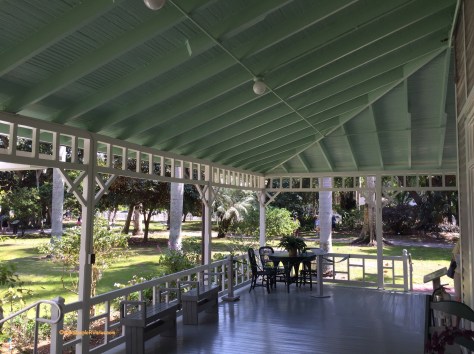
The main house has this beautiful wrap-around porch.

Next to the house is his study. Mina had a small garden off this building, so she could be near Thomas while he worked.

Between the river and his study, he had this pool built. The high dive was supposedly built after Fort Myers took ownership of the property and is not historically correct.
Over at the Ford estate, the home had more of a ‘cottage’ feel to it.
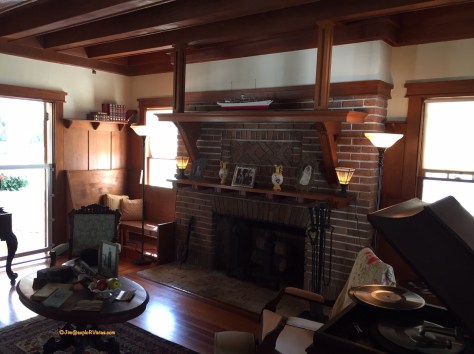
This fireplace commands the one end of the living room.

The home featured a cypress ceiling, which lent a certain coziness to it.

I’m sure Hank used this a few times! 🙂

Out back, there is a display with three Ford vehicles: a Model T, a Model A, and a 1917 Model TT truck.
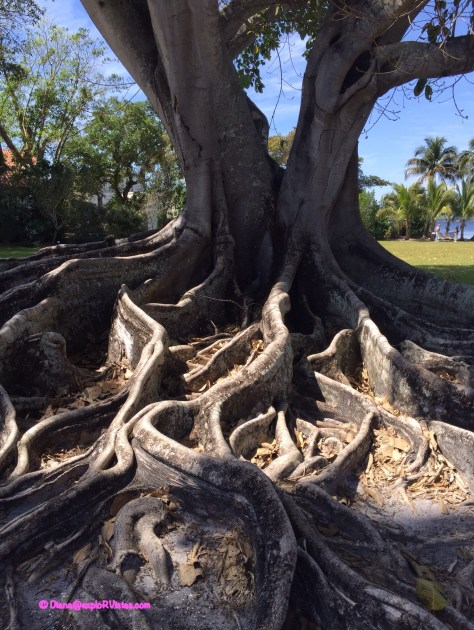
Near the river, this large Brown Wolly Fig shades the lawn. The root system on it was very unique.

Here I am with a statue of Henry Ford. I grew up 3 miles from Ford headquarters and the Rouge plant, so my childhood was heavily influenced by what this man had accomplished in the first half of the 20th century. By mass-producing affordable cars and paying high wages, he essentially created the middle class. He was far from perfect. We watched an hour long biography of him in the museum that was truly fascinating.
We spent 7 hours at the Edison-Ford Winter Estates. Most people wouldn’t take that long, but we were soaking it all in. After the hour long historian led tour, we wandered the grounds and explored buildings that weren’t included in the tour. We also enjoyed lunch with a view of the river at Pinchers, which we were able to walk to from the property. The estates are definitely worth the visit, if you happen to be in Fort Myers. We thoroughly enjoyed it!
Henry Ford: A Biography is available here for your Kindle through exploRVistas and Amazon for $2.99…or free to Kindle Unlmited members.

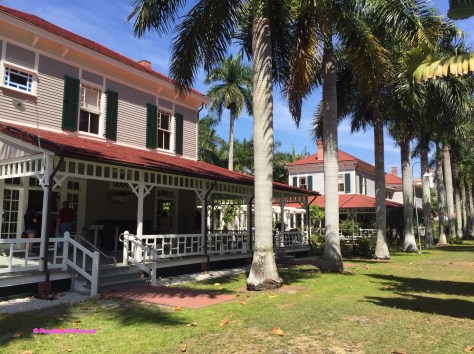
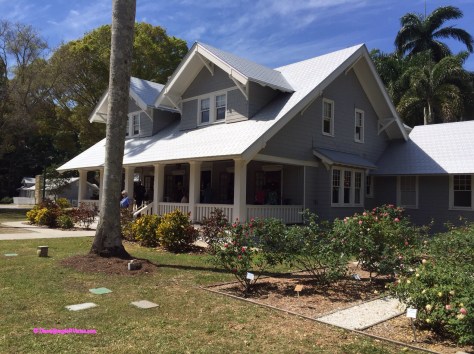

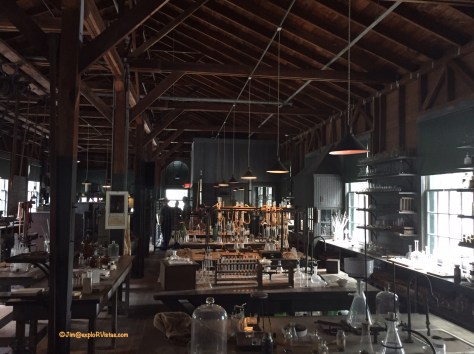


This is magazine-quality travel writing here! I was fascinated! I think you should submit this for publication to a Florida magazine or newspaper, or even in your hometown. It has great audience appeal. Great job!
LikeLiked by 1 person
Thanks Chrissy! I really appreciate that! I do have to defer to my editor, as she does a great job of cleaning up the original draft. 🙂
LikeLiked by 1 person
This is a wonderful place and not to missed. I find it interesting what each of us finds interesting in the tour. My favorite part were all the fruit trees that Henry brought. The unknown to fruit to me, was so fascinating. The Star Fruit trees were full of ripe fruit and the very ripe fruit was being sold in the VC. I also found all the orchids neat. Glad you had such a great visit:)
LikeLiked by 1 person
We saw those Star Fruit trees, Pam! Yes, I have always been fascinated by Henry Ford. Like I said, he was far from perfect…but what an interesting life he had. Have you been to the Henry Ford Museum and Greenfield Village in Dearborn? Both are must see places.
LikeLike
Yes, we did the museum a couple years ago. What a fantastic place!
LikeLiked by 1 person
Sounds like you’re having a great time! It feels like we are finally past winter and we’ve been out in it every day lately. Good that you did all that pedaling over the winter to get into shape. 🙂
LikeLiked by 1 person
We sure are, Peter! It feels good to not be looking at melting snow piles in March for a change!
LikeLiked by 1 person
We drove through Melbourne yesterday — see why you liked it but don’t think it would be ‘us.’ We’re enjoying the warm weather and following your every move. 🙂
LikeLiked by 1 person
Did you go south on A1A? It’s a whole different world beachside.
LikeLike
Yeah, we drove A1A, and then over to Okeechobee. At the moment we’re in Lake Placid. Will be getting back to the coach tomorrow. Will publish about the trip next week.
LikeLiked by 1 person
We drove right by this last year but were with some locals who did not want to stop. Looks like it is totally worth it next time we are in the area!
LikeLiked by 1 person
I really think you would like it, Jim!
LikeLike
Henry Ford is one of America’s most interesting icons. A great industrial leader, but flawed in many ways as a husband and father. Regardless of how you feel about the man, he left a legacy that made this country a leader.
LikeLiked by 1 person
So true, Bob. With both of us having grown up in the shadow of the Rouge plant, we both were influenced to some degree by Ford. He definitely was an interesting individual.
LikeLike
I had no idea about this history of Edison and Ford. What a delightful article and I agree with an earlier comment very well written. You had drawn in through all of it.
LikeLiked by 1 person
Thanks, Sue! I really appreciate your kudos. That was a fun post to write. 🙂
LikeLiked by 1 person